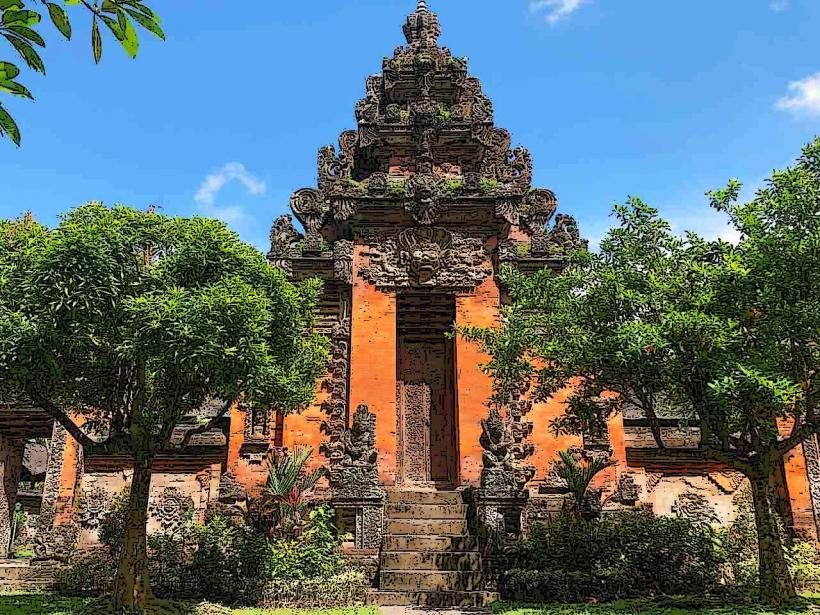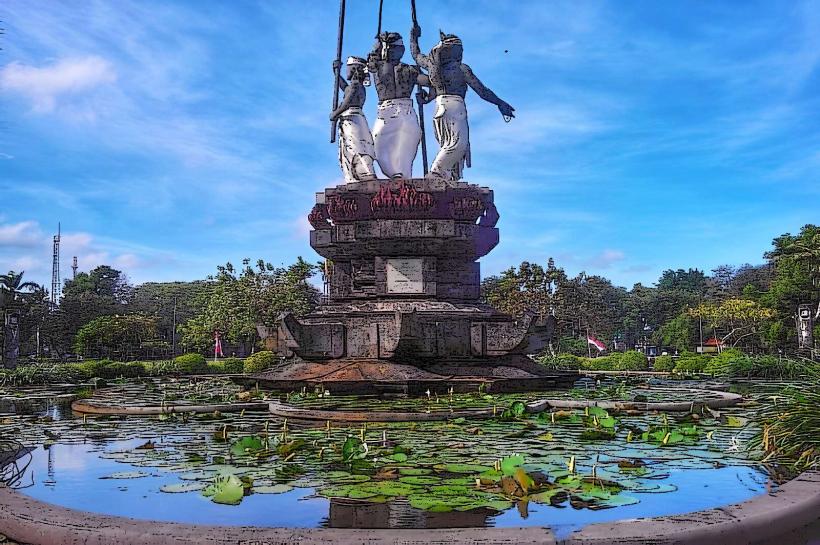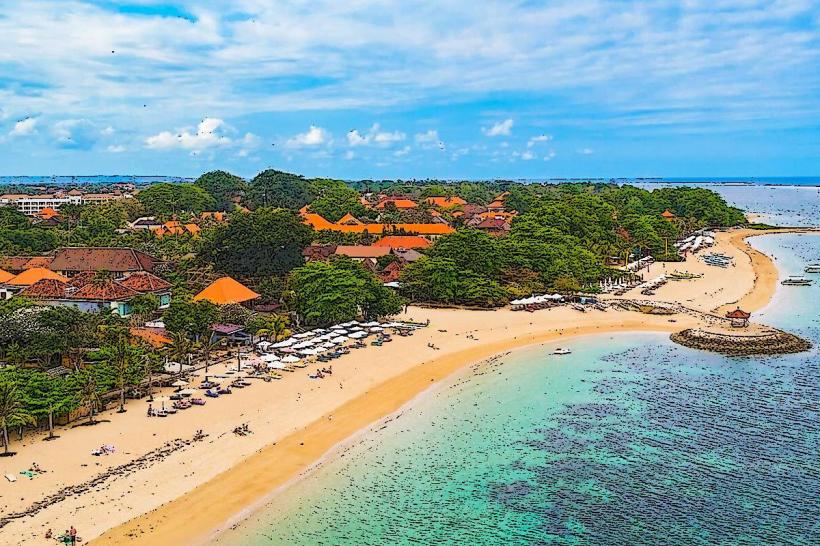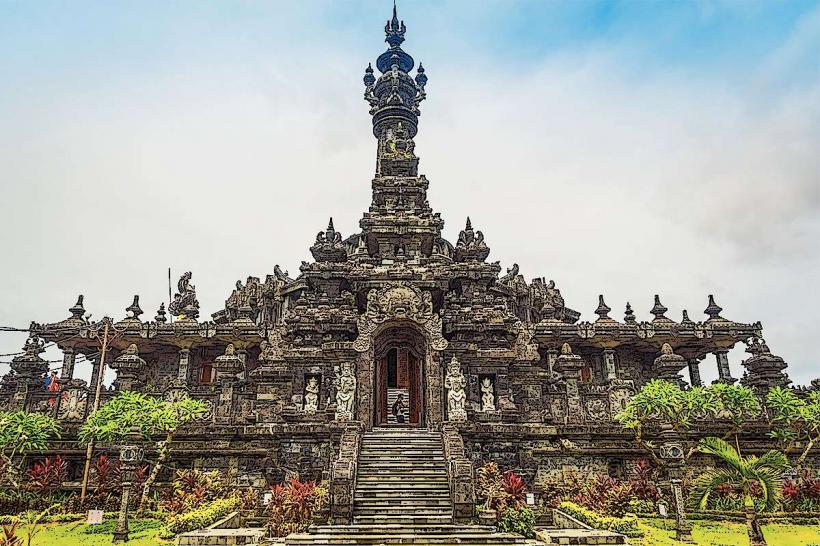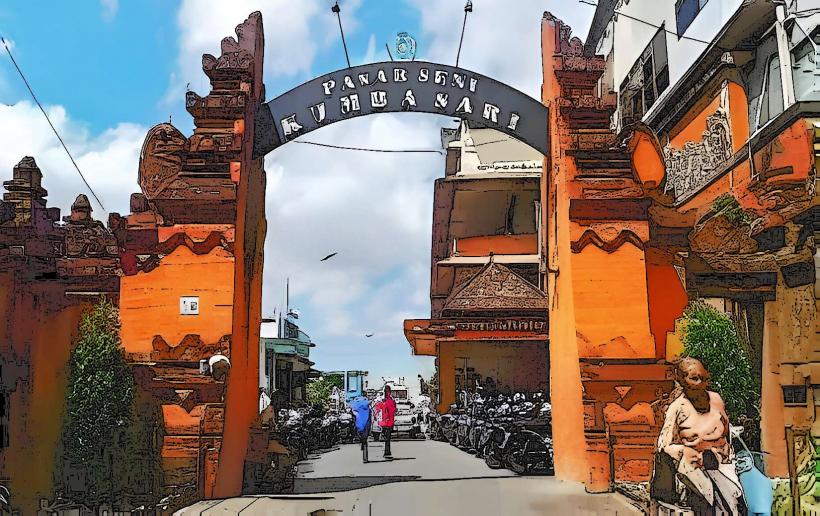Information
Landmark: Jagatnatha TempleCity: Denpasar
Country: Indonesia
Continent: Asia
Jagatnatha Temple: The Sacred Heart of Denpasar, Bali
Jagatnatha Temple (Pura Jagatnatha) is one of the most significant and revered Hindu temples in Denpasar, the capital city of Bali, Indonesia. The temple is dedicated to Sang Hyang Widhi Wasa, the Supreme God in Balinese Hinduism, and serves as an important site for spiritual activities and ceremonial rites in the region. With its distinctive architectural style and rich cultural history, Jagatnatha Temple is a symbol of Bali’s Hindu religious practices and its deep connection to the divine.
1. Overview of Jagatnatha Temple
- Location:
- Jagatnatha Temple is located in the center of Denpasar, easily accessible from the main streets of the city. It stands as one of the key landmarks in the heart of Bali’s capital and is close to other important sites such as Puputan Badung Square and Badung Market.
- Historical Background:
- The temple was built in the 20th century, specifically around 1953, and is considered one of the most prominent temples in Denpasar. While not as ancient as some other temples on the island, Jagatnatha Temple holds a significant place in the religious landscape of Bali.
- Dedication:
- Jagatnatha Temple is dedicated to Sang Hyang Widhi Wasa, who represents the all-encompassing, supreme divinity in Balinese Hinduism. This god embodies the concept of oneness with the universe, and the temple is considered a sacred space for worshiping this central figure of the Balinese Hindu faith.
2. Architectural Features of Jagatnatha Temple
Traditional Balinese Design:
- The temple showcases the classic Balinese architectural style, featuring intricately carved stone reliefs, traditional gates, and thatched roofs made from palm leaves. The design emphasizes symmetry, openness, and harmonious integration with nature, which are key elements of Balinese temple architecture.
Temple Structure:
- The temple is divided into several sections, each serving a different purpose:
- Jaba Pura: The outer courtyard, where visitors can gather and prepare for their prayers.
- Jaba Tengah: The middle courtyard, which contains the main shrine dedicated to Sang Hyang Widhi Wasa.
- Utama Mandala: The inner sanctum or the holy area, where the most sacred rituals are performed.
- The altar at the temple is beautifully adorned with offerings and is often surrounded by floral decorations, incense, and traditional ritual items. The temple is open to visitors who wish to observe or participate in the daily offerings and prayers.
Ornate Carvings and Statues:
- The temple features stunning stone carvings depicting various scenes from Hindu mythology. Statues of gods, goddesses, and mythological creatures line the walls of the temple, each representing different elements of Balinese Hinduism and the island’s spiritual beliefs.
3. Religious Significance of Jagatnatha Temple
Hindu Worship:
- As a major Hindu temple, Jagatnatha Temple plays a central role in the religious life of Denpasar’s residents. It is a place of worship for local Balinese Hindus, where they gather to offer prayers, incense, and flowers to Sang Hyang Widhi Wasa and other deities.
- The temple is particularly busy during major religious holidays and ceremonies, such as Galungan and Kuningan, which celebrate the victory of good over evil. These festivities bring large crowds of devotees to the temple to give thanks, seek blessings, and perform rituals.
Ceremonial Rites:
- The temple is a key venue for conducting important Balinese Hindu rituals such as Ngaben (cremation ceremonies), Odalan (temple anniversaries), and melaspas (purification ceremonies). Visitors may have the opportunity to witness these fascinating religious practices when visiting during the appropriate season.
Symbol of Balinese Hinduism:
- Jagatnatha Temple serves as a key symbol of Bali’s deeply rooted Hindu culture. The temple honors the core tenets of Balinese Hinduism, which emphasize the relationship between humanity, nature, and the divine.
4. Festivals and Celebrations at Jagatnatha Temple
- Odalan (Temple Anniversary):
- The temple celebrates its Odalan, or temple anniversary, every 210 days, in accordance with the Balinese pawukon calendar. This festive event involves large-scale offerings, processions, and prayers that attract large numbers of worshipers.
- Galungan and Kuningan:
- Jagatnatha Temple is also a popular venue during the major Balinese festivals of Galungan and Kuningan, which celebrate the balance between the forces of good and evil. During these holidays, the temple hosts elaborate ceremonies that include the presentation of offerings and the lighting of candles.
- Nyepi (Day of Silence):
- While Nyepi is a day of silence, when activities across Bali are minimal, Jagatnatha Temple plays an important role in the precursor ceremonies, such as the Ogoh-Ogoh parade. This involves the creation of large demonic figures made of bamboo and paper that are paraded through the streets before being burned to cleanse the island.
5. Visiting Jagatnatha Temple
- Visitor Experience:
- Jagatnatha Temple is open to visitors, though it’s important to be mindful of the local customs and religious practices. Visitors should dress modestly (covering shoulders and knees), especially when entering the temple complex.
- The temple’s serene atmosphere provides a peaceful place for reflection, and the scenic surroundings make it an excellent spot for photography. It’s also a wonderful location to witness Balinese Hindu rituals up close, especially during important religious events.
- Accessibility:
- The temple is centrally located in Denpasar, making it easily accessible for tourists exploring the city. It is well-signposted and is typically open throughout the day.
- Entrance Fee:
- There is generally no entrance fee to visit Jagatnatha Temple, though visitors may be asked to make a small donation to support the temple’s maintenance and activities.
6. Conclusion
Jagatnatha Temple is not just an architectural wonder, but a vibrant spiritual center and a symbol of Bali’s Hindu identity. Its historical significance, architectural beauty, and cultural role make it a must-visit landmark for anyone interested in understanding the spiritual heart of Bali. Whether for its sacred ceremonies, historical value, or tranquil atmosphere, Jagatnatha Temple stands as a proud representation of the island’s rich religious heritage and spiritual devotion.

